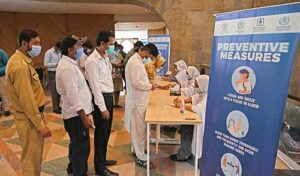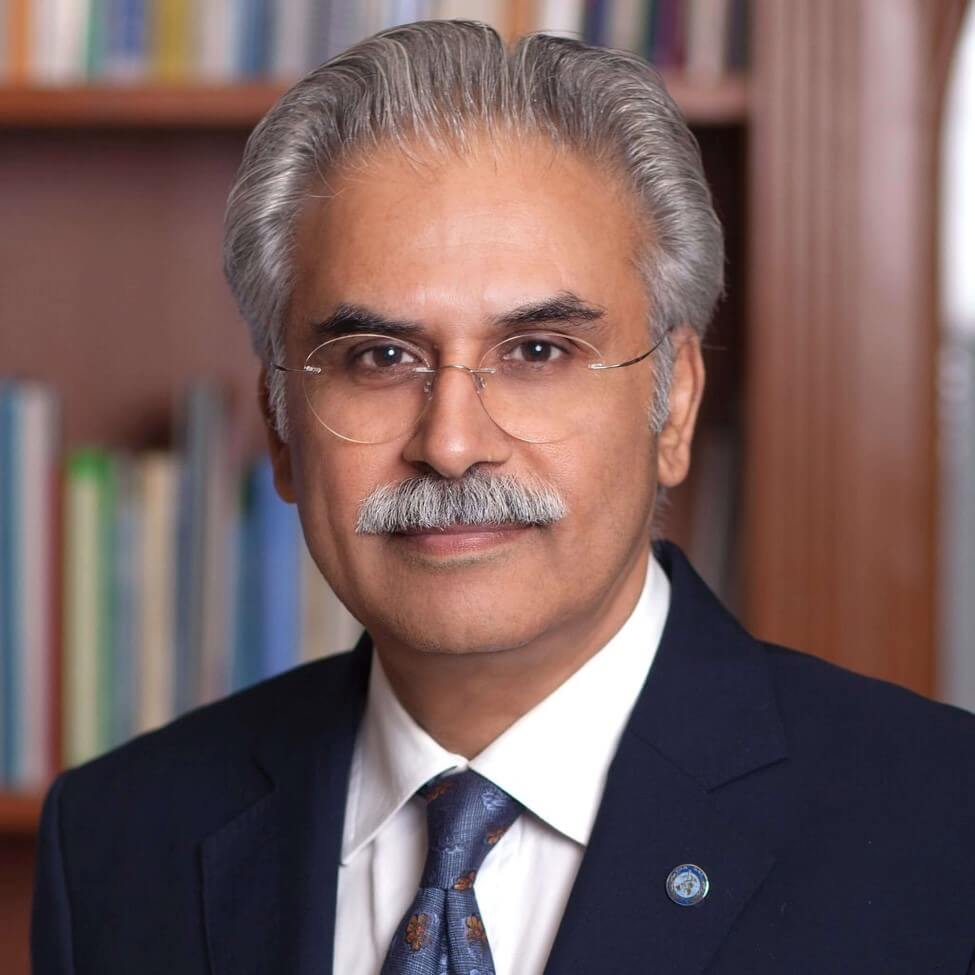Given the national state of preparation to deal with a health emergency, let alone a global pandemic, Pakistan has generally done well in responding to COVID-19 and its changing face, the latest of these changes being Omicron. The next few months will be critical as Omicron is spreading like wildfire.
Omicron spreads faster than any other known variant of COVID-19. The time it took the Delta variant to double was up to two weeks, whereas Omicron can be found in double the number of people in just two to three days. This is based on the rate of cumulative increase in the number of cases, and it changes with an evolving epidemic. Given the, until now, known characteristics of Omicron, it spreads rapidly, but doesn’t usually cause serious illness, and the existing vaccines are largely effective against it. Despite the scare it has created, this may mean the maximum number of people getting infected with no or very mild symptoms, and a great majority of them recovering. Most would not even know if they ever got infected. Those already vaccinated would be more protected and the unvaccinated will develop immunity (including the anti-vaxxers). Early evidence is also showing that there would thus be less pressure on hospitals. South Africa, from where it started, has already recovered from it. And this means that herd immunity will be hastened, which in the larger perspective is a silver lining for the downward course of COVID-19. The next variant around, it is hoped, the world will be better immune to dodge it.
Nobody can tell for how long Covid is going to last and how many other variants we will be seeing, but science would indicate that with each variant, the world will be able to offer greater resistance to its spread and gradually, hopefully, it will become similar to flu, and we and the virus will learn to co-exist — unless some such variant emerges that evades immunity altogether.
Vaccinations have indeed helped. Despite being a non-producer of vaccines, Pakistan has also done quite well in procuring and administering vaccines, beginning with high-risk groups. The National Information Management System (NIMS), which comprises the national record-keeping data for vaccinations, is probably one of the best. In relative terms, the Government of Pakistan has, through the National Command Operation Centre (NCOC) and National Disaster Management Authority (NDMA) done exceptionally well. It had set the target of fully vaccinating 70 million people before the end of the year, and the figure achieved in this regard was 70,576,467 by the eve of December 31, 2021. This is a remarkable achievement given that we did not produce a single vaccine. We have worked hard to access vaccines in a highly competitive global market and have not allowed for any stockpiles during these months.

I mentioned a “state of preparation” at the outset, which is not just a random term, but rather a science. After a series of 14 International Sanitary Conferences over the last one-and-a-half centuries, under the auspices of the World Health Organization (WHO), the world finally adopted International Health Regulations in 2005 (IHR). In essence, the purpose and scope of the International Health Regulations (2005) are “to prevent, protect against, control and provide a public health response to the international spread of disease in ways that are commensurate with and restricted to public health risks, and which avoid unnecessary interference with international traffic and trade.” IHR-2005 is the hardest of the soft laws in global health, a binding of a sort, which has set the framework for emergency preparation and response among the 194 member states of the WHO. Had countries seriously fulfilled their responsibilities towards IHR-2005, the preparation and response to COVID-19 could have been different.
One of the responsibilities of WHO in the context of IHR is “supporting States Parties to assess their existing national public health structures and resources, and to build and strengthen their core public health capacities for surveillance and response.” In order to support countries, the WHO has developed a system for countries to first self-assess the state of necessary public health functions. Then a very comprehensive Joint External Evaluation (JEE) is organised for the requesting countries. Pakistan was the first country to volunteer for JEE. A large group of international experts undertook a lengthy evaluation of 19 technical areas in the country in April and May of 2016 and concluded that Pakistan had no National Public Health Emergency Preparedness and Response Plan. The JEE made detailed recommendations in this regard. Until the time COVID-19 hit us, Pakistan had not moved to develop this plan.
In the absence of any National Public Health Emergency Preparedness and Response Plan, two factors have saved Pakistan from a large-scale disaster. One, civil-military cooperation in setting up and running the NCOC. Ideally, we should not have needed NCOC to begin with as we had a NDMA which came into being in 2010. This notwithstanding, the NCOC was erected in the face of the global pandemic, and it worked very well. It could make timely and consultative decisions on the basis of the available data and more importantly, organise efficient national coordination for the implementation of decisions across the country. The data is not entirely adequate, but it has served as a basis for making and enforcing timely decisions.

The second factor which has rescued us is the polio programme infrastructure. Pakistan tragically lacked a comprehensive integrated health information system in the country of which the disease surveillance system is an integral part. In the absence of a reliable real time disease surveillance system in the country, the polio programme was quickly repurposed and COVID-19 surveillance was piggybacked on it. This also worked very well. The combination of these two factors provided a good basis for generating a calculated and evidence-based national response.
However, although we managed to generate a relatively good response to the pandemic, the institutional basis and hence, sustainability of the health security infrastructure and its ability to timely pick early warning signals of disease spread and the generation of an effective response to it, are weak. It is more a stop-gap arrangement that was put together as a knee-jerk response than a long-term, sustainable health system. It is no substitute for system-based resilience and resourcefulness. We are still far from that.
What can we learn from dealing with the COVID-19 experience? As we enter the third year of the pandemic and as it will gradually recede, as I have argued above, will our interest in the health of the nation and health sector conditions also gradually diminish? Will it be business as usual? Or like mature people will we set up a formal process to review our experience and conduct an objective analysis of our strengths and weaknesses? Ideally, we should start thinking of setting up a commission to review Pakistan’s response and based on this experience, this commission should suggest short, medium and long-term plans for strengthening our health system and its capacity to respond to public health emergencies. The 18th Constitutional Amendment and its impact on fragmenting the national health sector has felt like a bonfire through COVID-19. Now there must be some learning from this experience. The suggested Commission should recommend ways to deal with this impasse. There is already talk about a COVID-19 recovery plan in global health. The likes of a Marshal Plan needs to be developed which will transform post-Covid national health systems.
Pakistan has an official policy of advancing universal health coverage (UHC) in the country and has made good progress in developing the three dimensions of UHC: integrated delivery of prioritised quality essential health services; financial protection of those who cannot pay; and non-discrimination in healthcare. Health security is an integral component of UHC and it is ensured through robust preparation to respond to public health emergencies. It is time to set it right. We need systems rather than band aids and fire-fighting every time.

The writer is a former Special Assistant to the Prime Minister for Health and has also served as the Director of Health System Development at the WHO Regional Office for the Eastern Mediterranean.


